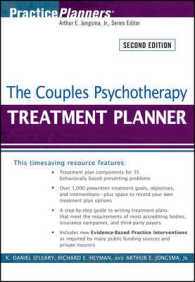Full Description
Nomadic Pastoralism among the Mongol Herders: Multispecies and Spatial Ethnography in Mongolia and Transbaikalia is based on anthropological research carried out by the author between 2008 and 2016 and addresses the spatial features of nomadic pastoralism among the Mongol herders of Mongolia and Southern Siberia from a cross-comparative perspective. In addition to classical methods of survey, Charlotte Marchina innovatively used GPS recordings to analyze the ways in which pastoralists envision and concretely occupy the landscape, which they share with their animals and invisible entities. The data, represented in abundant and original cartography, provides a better understanding of the mutual adaptations of both herders and animals in the common use of unfenced pastures, not only between different herders but between different species. The author also highlights the herders' adaptive strategies at a time of rapid sociopolitical and environmental changes in this area of the world.
Contents
ACKNOWLEDGEMENTS, NOTE ON TRANSLITERATION AND TRANSLATIONS, INTRODUCTION, CHAPTER 1. NOMAD'S LAND, NO MAN'S LAND?, CHAPTER 2. TO HOLD AND BELONG TO ONE'S LAND, CHAPTER 3. SPACES OF SPECIES, CHAPTER 4. ANIMALS AND TERRITORIES, CONCLUSION, BIBLIOGRAPHY, Index
-

- 電子書籍
- 江家次第(3)







